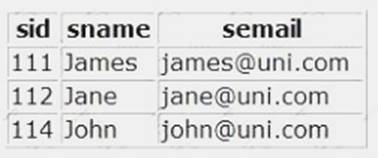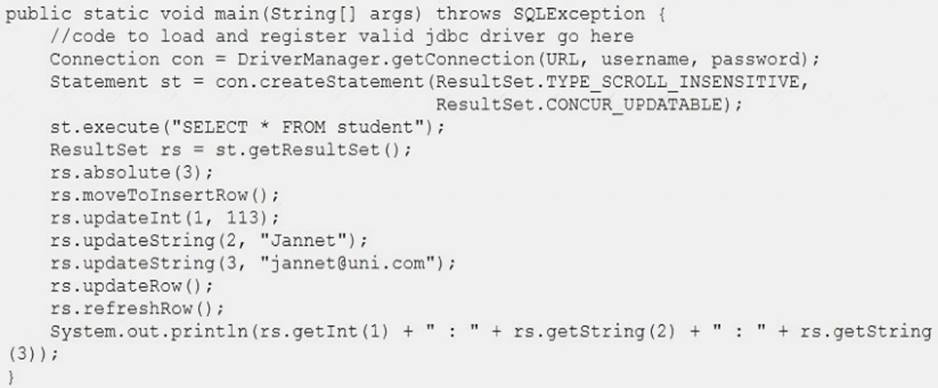Given the code fragment:
List
.map(funVal)
.peek(System.out::print); What is the result?
Correct Answer:
C
Given the code fragment:
Path source = Paths.get (“/data/december/log.txt”); Path destination = Paths.get(“/data”);
Files.copy (source, destination);
and assuming that the file /data/december/log.txt is accessible and contains: 10-Dec-2014 – Executed successfully
What is the result?
Correct Answer:
D
Given the code fragments: class Employee { Optional
address;
Correct Answer:
B
You want to create a singleton class by using the Singleton design pattern. Which two statements enforce the singleton nature of the design? (Choose two.)
Correct Answer:
BD
Given the records from the STUDENT table:
Given the code fragment:
Assume that the URL, username, and password are valid. What is the result?
Correct Answer:
A